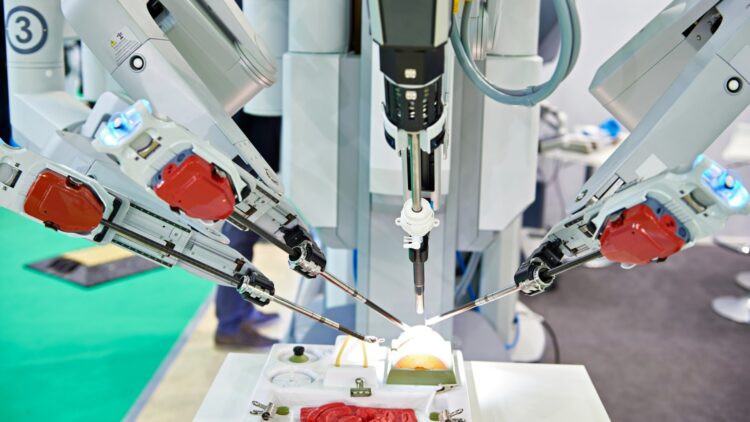The development of a fully autonomous surgical robot represents a great achievement in the integration of artificial intelligence and medicine. For the first time, a robotic system was able to perform a critical stage of a common surgery on its own, demonstrating its ability to make decisions, adapt to unexpected circumstances, and complete procedures with high precision. The initiative, led by a team at Johns Hopkins University, opens doors to many possibilities in the field of modern medicine.
Robot performs surgery without human control for the first time
An experimental AI-guided robot can autonomously perform a delicate, complicated phase of a common gallbladder operation, marking a major step toward automated medical procedures, researchers said on Wednesday. Existing surgical robots are remotely controlled by surgeons. The new system uses artificial intelligence to make independent decisions and adapts to unexpected complications during operations, said Axel Krieger of Johns Hopkins University in Baltimore, who led the research.
He likened it to an autonomous vehicle that can “navigate any road, in any condition, responding intelligently to whatever it encounters.” “This advancement moves us from robots that can execute specific surgical tasks to ones that truly understand surgical procedures,” he said. The SRT-H robot was trained via an AI framework known as language-guided imitation learning, using videos of surgeons performing gallbladder removal surgeries on pig cadavers, the researchers reported in Science Robotics.
The robot was tested on eight varying sets of pig gallbladders and livers that had been removed from the animals. Separating the gallbladder from the liver takes several minutes and involves “diverse tool use, including grabbing, clipping, and cutting – skills common in real surgical procedures,” along with decision-making and adaptation, the researchers said. The pig organs and blood vessels in the tests varied widely in appearance and anatomy, “mirroring the diversity encountered in human surgeries,” they said.
Comparison with existing robotic systems shows leap in autonomy
The main difference between the SRT-H and conventional systems lies in its decision-making autonomy. While systems like the da Vinci operate as an extension of human hands, the experimental robot processes information and acts based on prior learning, without direct intervention. Tests showed that the SRT-H was able to complete the gallbladder dissection in all cases, even when faced with anatomical variations between organs.
While the robot achieved 100% accuracy in the surgeries, it took longer to perform the work than a human surgeon. Commercially available surgical robots include Intuitive Surgical’s ISRG.O da Vinci Surgical System, which has been used in over 12 million procedures globally since receiving FDA approval in 2000. Unlike SRT-H, the da Vinci system relies entirely on human surgeons to control its movements remotely.
The precision achieved in all operations reinforces the idea that, with further adjustments, the SRT-H could match and even surpass current standards in certain procedures. The additional time reflects a caution programmed into the system, which prioritizes safety and stability when making decisions.
Surgical automation could reshape global healthcare
The global surgical robotics market is approaching $10 billion annually with about 2.7 million robotic procedures performed in 2024, Baird analyst David Rescott estimated. Eventually, autonomous surgical robots could help address surgeon shortages, minimize human error, and provide consistent, high-quality care in underserved regions, the researchers said. The research was supported by the Advanced Research Projects Agency for Health, the National Science Foundation, and the National Institutes of Health.
Precision and access in underserved areas
The successful completion of the surgery, albeit in a controlled environment, suggests that autonomous robots could become good partners in surgical centers. By reducing reliance on human operators and standardizing procedures, the technology can expand access to quality surgeries in settings where specialists are scarce.

